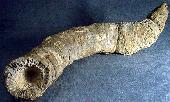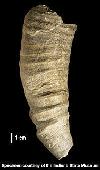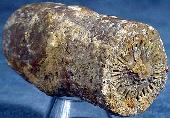|
 See More Images See More Images
(47 total)

Caninia torquia
© 1998 Dr. Richard Paselk, Humboldt State University Natural History Museum

Siphonophrentis
© 2004 Indiana State Museum, Indiana Geological Survey, and Indiana University

Scleractinian
© 1998 Dr. Richard Paselk, Humboldt State University Natural History Museum
|
What are Cnidarians? The name Cnidaria comes from the Greek word “cnidos,” for “stinging nettle.” All cnidarians have specialized cells that can inject poison into their prey or even hapless passers-by. With no hard parts, they are not preserved often, and their fossils may be difficult to recognize. The anthozoans include the sea anemones, sea pens, and true corals, which form large reefs today.
The scyophozoans are the true jellyfish.
Hydrozoans may look like true corals or true jellyfish, depending on the species and stage of their lifecycle.
The cubozoans, which include the deadly box jelly, resemble true jellyfish but differ in some of their characteristics. |
First known fossil occurrence: Precambrian. Last known fossil occurrence: Quaternary. This group has living relatives. Cool Cnidarians links: Search for images of Cnidarians on Google |
|




